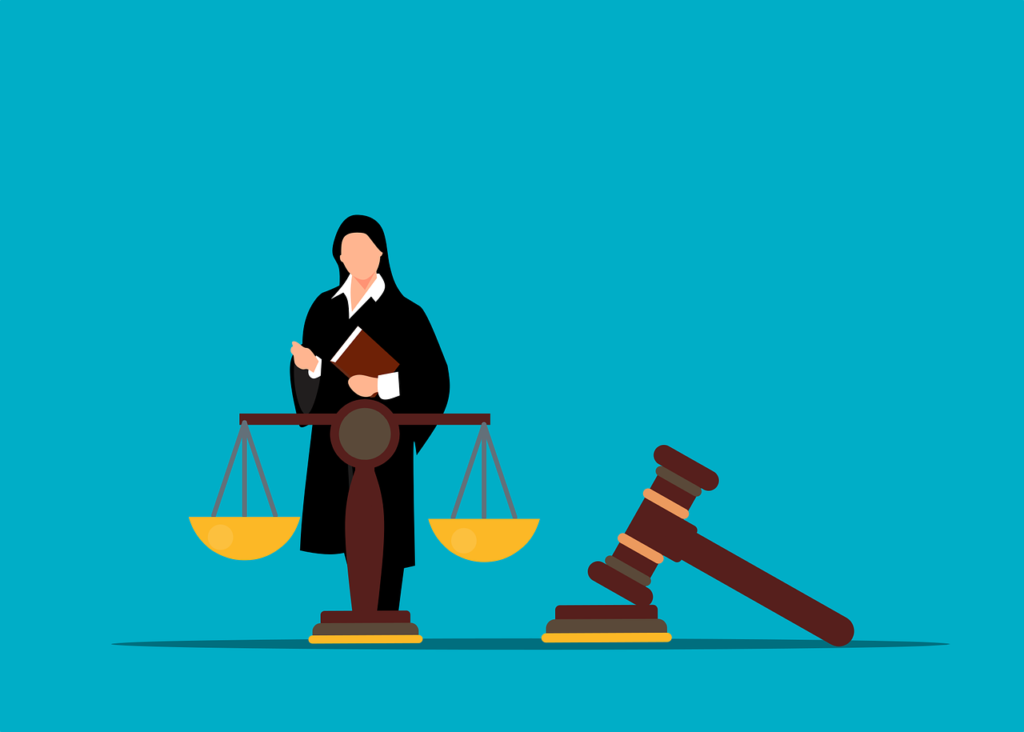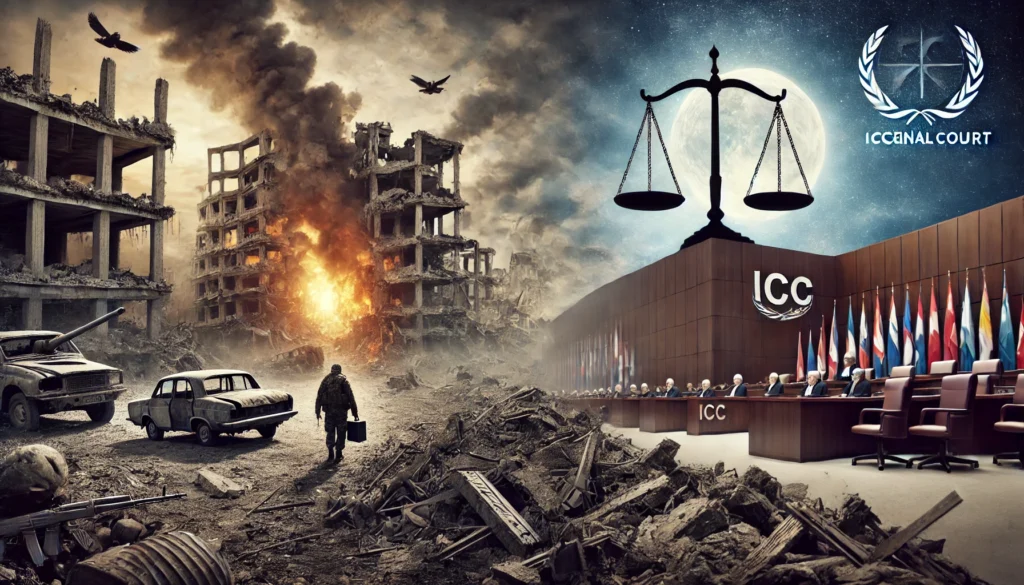Published on 11th April 2025
Authored By: Aseem Srivastava
United University
Facts of the Case
In 1971, India had its 5th Lok Sabha General choices wherein former Prime Minister Smt. Indira Gandhi secured 352 out of 518 seats which brought Palm for her and her Party Congress. But before she could enjoy her achievement, a series of allegations regarding illegal and loose choices stemmed against her. Shri Raj Narain, the leader of Ram Manohar Lohia’s Samyukta Social Party stood against Indira Gandhi in the choices of Rae Bareilly in Uttar Pradesh. He was extremely confident of his palm in the choices. He indeed tried to take out a palm rally before the protestation of results. Still, after the election results, he was extremely disappointed and refused to accept that he was defeated. As a result of this dissatisfaction, Raj Narain decided to appeal to abate the election, criminating Mrs. Gandhi of espousing loose practices during her election juggernauts.
On 24th April 1971, He filed a solicitation in the Allahabad High Court Challenging Prime Ministers choices and criminating Indira Gandhi for violating the election law elevated in the Representation of the People Act of 1951 as her election juggernauts were supported by numerous government officers including the fortified forces and original police.He also claimed that Indira Gandhi had used government vehicles for her election campaigning and had distributed liquor and robes amongst the choosers to impact them and exceeded the crusade charges limit beyond Rs 35,000. The Allahabad High Court after hearing both the sides decided to declare PM Indira Gandhi’s election invalid. The Court set up Indira Gandhi shamefaced under Section 123( 7) of the Representation of People’s Act, 1971. Latterly, the High Court ruled that she couldn’t hold the position as Prime Minister and was disqualified from querying choices for six times. The court granted the Congress party twenty days to appoint a new Prime Minister and replace Indira Gandhi.
Dissatisfied with the High Court rulings, Indira Gandhi approached the Supreme Court of India challenging its decision. During that time, the Supreme Court was in recess, so the court at that time had issued an instruction, temporarily staying the order of the High Court until farther proceedings. This order allowed Mrs. Gandhi to attend administrative sessions but barred her from sharing in debates and voting in the Lok Sabha. During the ongoing Supreme Court proceedings, also- President Fakhruddin Ali Ahmed declared a National Emergency due to internal disturbance. During this time, the 39th indigenous Correction was made which introduced Composition 329A in the constitution.
Legal issues involved in the case
- Validity of the Representation of the People (Amendment) Act, 1974 The crucial issue was whether the recommendations to the Representation of the People Act and the subsequent constitutional Amendment ( 39th Amendment) that sought to immunise the election of the Prime Minister from judicial scrutiny were valid.
- Separation of Powers Whether the 39th Amendment violated the introductory structure of the Constitution by taking away the governance of the bar over the election controversies concerning certain high officers, including the Prime Minister.
- Principle of Free and Fair choices Whether the impunity given to the Prime Minister’s election from judicial review under the 39th Amendment violated the introductory principles of republic and free choices, which are part of the introductory structure of the Indian Constitution.
Arguments of the case
Arguments by Appellant
The pleaders contended that the maturity decision of Kesvananda Bharti judgment cannot be taken as a precedent to decide whether the choices would be free and fair. They said that when the Constitution of various countries does leave their election controversies to the Legislature, there are a various composition in our Constitution as well which show the judicial review can be barred in similar cases as a matter of policy.
Coming back to the corner case, they that how Kesvananda Bharti and Shankari Prasad both didn’t cover the dimension of electoral controversies and rather they dealt with the meaning of the word ‘Amendment’. Incipiently, they argued that the rule of law isn’t a part of introductory structure and piecemeal from Composition 14, our Constitution recognizes neither doctrine of equivalency nor rule of law.
Arguments by Defendant
The main argument of the supplicant revolved around the 39th correction which was affecting the ‘ introductory structure of the Constitution’ and also takes down the power of governance of courts under election solicitation which was illegal to the bar. They presented that the function of the Legislature is to ordain and can make and pass laws. Still, the power to decide the indigenous validity of a law, lies with the bar.
Article 14 guarantees Equality before law and equal protection of law. The President, when passed similar law, placed himself and other people above the law which was not justified. Rule of law and judicial review are the integral part of the constitution and cannot be altered as stated in the Fundamental Rights Case. The Correction was passed when there was not maturity of MP’s in the house who cannot bounce in favour or against it. And incipiently, Composition 368 doesn’t empower Parliament to amend Constitution to decide who wins or loses the election.
Ratio Decendi (Reasoning)
The Supreme Court of India declared Clause( 4) of Article 329A of the Constitution is invalid as per the decision of Kesavananda Bharati Vs Union of India. This clause was introduced by the Thirty- ninth Amendment Act to cover election results from judicial review which the Court viewed as a problem. The Court held that Parliament cannot amend the Constitution in a way that interferes with its introductory structure. This is because the principle of Basic Structure includes fundamentals of republic, the rule of law, and the right to a fair hail.
Article 329A was considered against these abecedarian principles as it creates illegal distinctions and restricts the capability to challenge election results.thus, the Court held that Article 329A clause( 4) unconstitutional as it infringes the core values of the Constitution.
In this case, Raj Narain also challenged the constitutionality of the Representation of People’s( Amendment) Act, 1974, and the Election Laws( Amendment) Act, 1975, claiming their end as invalid. They said that these acts were passed without the concurrence of the maturity of the house, as numerous parliamentarians were detained under the Preventive Detention Act at that time. Their absence from the congress during that time led to indecorous debate and voting on recommendations. So similar acts should be declared illegal. Still, the court ruled against this challenge, stating that similar issues were internal matters for Parliament to resolve and had no relation with the case. The Court held that Parliament had the authority to make any laws including laws related to choices under Article 368 of the Constitution.
Also, the judicial scrutiny of administrative proceedings is confined by Aricle122. The court as a result of this , decided to uphold the validity of the emendations and affirmed that Parliament acted within its indigenous powers despite the procedural enterprises raised. Indira Gandhi’s election as Prime Minister was also in question. The Supreme Court in this regard decided to uphold the validity of Indira Gandhi’s election. The Court didn’t find any significant substantiation of election malpractice and ruled that particular election charges shouldn’t count against party limits. It was also held by Yashpal Kapur, who had abnegated as a government officer before aiding Gandhi in not engaging in loose practices. The Supreme Court capsized the earlier ruling of the Allahabad High Court that had averted Mrs Gandhi from choices and needed her abdication and allowed her to continue as Prime Minister of India.
Holding
The holding in the case of ‘Indira Gandhi v. Shri Raj Narain’ primarily centred on the following points
- Allahabad High Court ( 1975)
The court held Indira Gandhi shamefaced of electoral malpractices under the Representation of the People Act, 1951. Declared her election to the Lok Sabha from Rae Bareli ** null and void. Barred her from querying choices for six times due to violations similar as using government officers for her election crusade. Exceeding the legal limit for election charges. Misusing her sanctioned position as the Prime Minister.
- Supreme Court ( 1975)
The Supreme Court originally granted a tentative stay of the Allahabad High Court’s judgment. This allowed Indira Gandhi to remain as Prime Minister but banned her from advancing in Parliament. latterly, in its final ruling it upheld corridor of the ‘39th Amendment Act’ passed during the exigency, which sought to make the election of the Prime Minister vulnerable from judicial review. Still, the court struck down certain vittles of the Amendment as unconstitutional, asserting the introductory structure doctrine (free and fair choices are integral to the introductory structure of the Constitution). The court therefore reaffirmed the significance of popular principles and judicial review. The Allahabad High Court disqualified Indira Gandhi from her administrative seat due to electoral malpractices. The Supreme Court latterly balanced the case by guarding indigenous principles while upholding corridor of the 39th Amendment.
Judgement
The court handed its judgement on 7th November, 1975 and was the first case in which the corner decision of Kesvananda Bharti case was applied. The apex court upheld the contention of the replier and declared clause ( 4) of Article 329- A as unconstitutional. Mathew J said that Composition 329- A ( 4) destroyed the introductory structure of the constitution. He was of the view that a ‘ healthy republic’ can only serve when there’s possibility of free and fair choices and the impugned Article destroyed that possibility.
Chandrachud J. set up that the amendment was violative of the principle of ‘separation of powers’ as it wilfully transferred a function into the hands of the legislative which was purely judicial. He was also of the view that the correction is violative of Article 14 as it creates unstable positions of specific members of the Parliament against others.
Ray C.J held that one further introductory point was violated by the said Amendment i.e the rule of law and Justice Khanna was of the opinion of violation of morals of free and fair choices. The bench also held that the amendment was violative of the principles of natural justice i.e Audi Alterum Partem which means ‘let the other side be heard’ as it was denying the right to fair hail of those who were challenging the election of the members mentioned in the Amendment. Hence it was on varied reasons that the 39th Amenmdent act, 1975 was struck down as it was unconstitutional and violative of the introductory structure of the Constitution.
References
1) Prashant Bhushan, The Case That Shook India: The Verdict That Led to the Emergency 45 (1st ed. 1978)
2) https://www.legalserviceindia.com/legal/article-2879-indira-gandhi-vs-raj-narain-case-analysis.html
accessed on 24th January 2025
3) Kesavananda Bharati v. State of Kerala, (1973) 4 SCC 225
4) https://indiankanoon.org/doc/936707/ accessed on 25th January 2025




